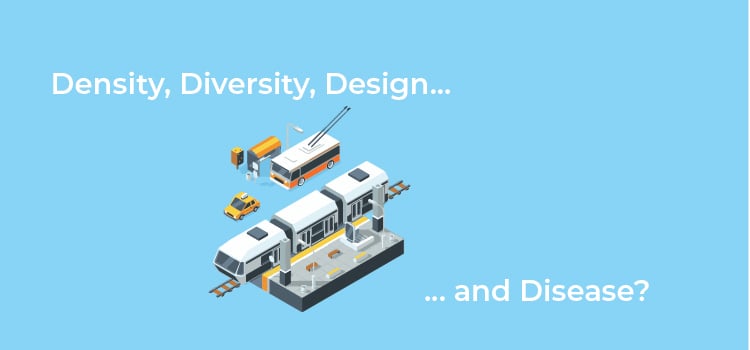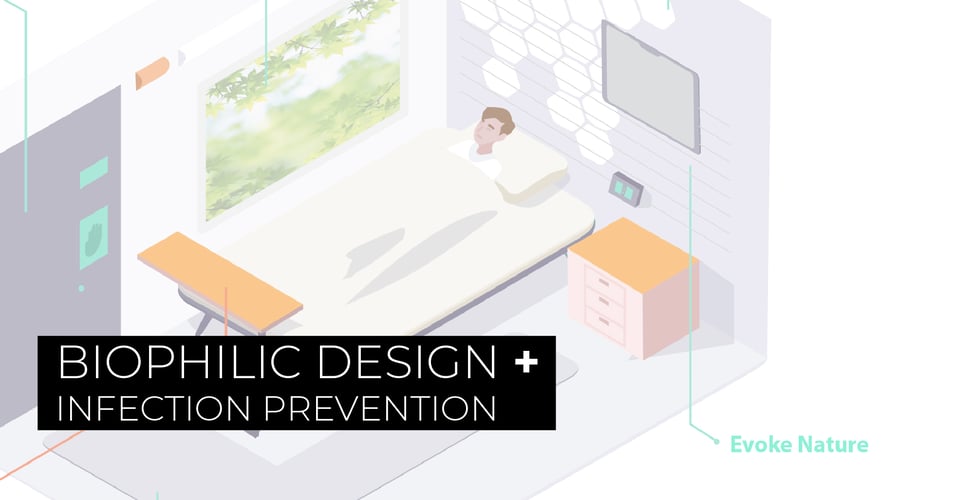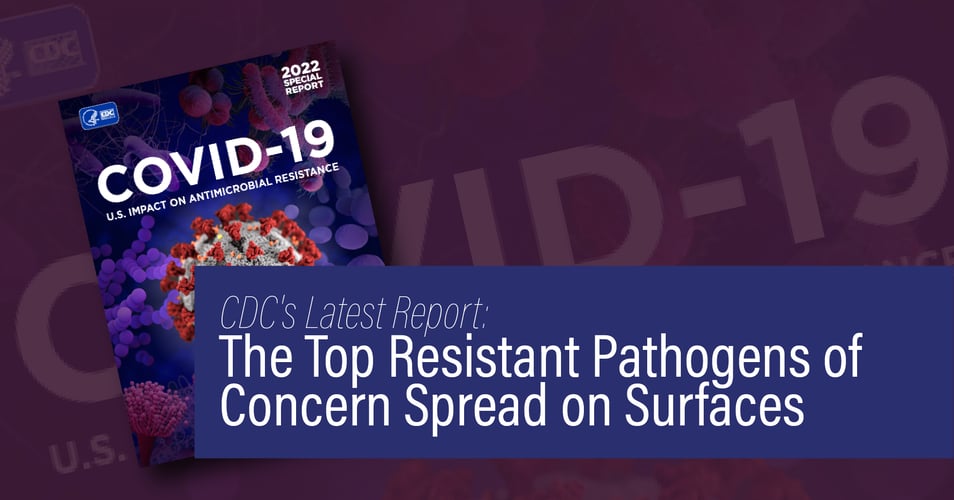Density, Diversity, and Design... and Disease?

What do you need to have a successful transit system? Dense city centers, mixed land use with retail and residential, and attractive and easy to navigate layouts. These principles were proposed in 1997 by researchers Cervero and Kockelman as Density, Diversity, and Design. What do you do, however, when 2:3 of the most important elements of a successful transit system not only help people get around but also viruses and other transmissible diseases? In today's post, we will explore how adding an element of infection prevention into the design principle can help transit systems, and their riders, remain healthy.
A city can't just build a transit system and then wait for people to use it. Trains, light rail, and buses need to take people where they actually want to go. But transit planning works both ways; with forethought, transit stations and service routes can be developed in ways to attract people. These building considerations are grouped together as the "three D's" as follows:
Density | The concentration of people and activities. The more concentrated the population of residents, consumers, and commercial activities, the more ridership available to a transit system.
Diversity | The mixed use of land resources. If a transit route offers a combination of residential, commercial, educational, and retail options, riders will be drawn by convenience and efficiency.
Design | Ease of access and comfort of the pedestrian. Not limited to just attractive streetscaping and sidewalks, design also means reducing safety hazards like driveways crossing sidewalks, ensuring active first-floor areas, and ensuring buildings face the best direction and have accessible points of entry.
If you consider hospital infection control, two of the Three D's enable viruses and other transmissible disease to spread among a population. Close quarters, packed transit vehicles, and lots of turnover of new people coming in and out provide an efficient way for a virus to spread to many people over a short period of time. It is unrealistic to consider upending decades of urban planning (which has many economical and environmental benefits as well as helping transit ridership) just to prevent infections. However, what if we could make it better?
Enter Design. Urban design has always found a way to combine aesthetics with safety. Designers can make a space useful, even beautiful, while considering the safety of its users, including residents, workers, and transit riders. Well-lit streets help prevent crime, multiple entrances to transit stations help reduce crowding, and grab bars help provide stability. All these measures required a shift in design, construction, and budgeting, and the payoff is safer and more accessible transit systems.
So, how can design help prevent infection transmission, and should it at all? First, let's consider whether or not a transit system should consider infection prevention as a priority. During a pandemic, of course, taking steps to avoid faster disease spread among the population has a direct impact on the health of a community. After a pandemic, however, steps will have to be taken to convince ridership that transit is safe, that the vehicles and stations have infection prevention measures in place. There is a an ongoing financial investment and tax revenue source in a transit system that can quickly become a loss if people are not riding.
Now, let's consider some ways that design can help prevent disease transmission. There are some obvious design elements already in place: Soap in the bathrooms, plentiful trash cans, air filtration systems. The COVID pandemic required intensive disinfection throughout the day, but these cleaning regimens are not sustainable over the long-term. Surface contamination, especially of high-touch surfaces such as grab bars and handles, can be drastically and continuously reduced - without the need for extra cleaning or staff - through the use of biocidal materials. EOScu, a copper-infused solid surface, reduces the transmission of viruses and other pathogens by deactivating or killing them continuously, sanitizing the surface continuously. Each time someone sneezes on EOScu, any pathogens that reach the surface immediately begin to fall apart due to the oxidizing properties of copper. (Here's the research.) Sanitized surfaces are less contaminated, even if touched by thousands of people a day. If surfaces are sanitized, there is less contamination that can be picked up by someone's hands, breaking the chain of infection.
Imagine the time when transit riders in wheelchairs had limited access to stations, buses, and trains. Consider the days when there were no laws to prevent over-filling of buses, with riders even hanging out of open doors. Remember that many transit systems had to add air conditioning or air filtration for the safety of passengers. All these changes (and more) took substantial public demands, policy changes, innovative technologies, and yes, financial investments to put in place. The changes were made, however, because without riders, there is no transit system. And today, riders demand (and deserve) a safe ride to work or home.
![EOScu Logo - Dark - Outlined [07182023]-01](https://blog.eoscu.com/hubfs/Eoscu_June2024/Images/EOScu%20Logo%20-%20Dark%20-%20Outlined%20%5B07182023%5D-01.svg)

![[infographic] Public Health Systems Download and share!](https://no-cache.hubspot.com/cta/default/216314/interactive-177841523491.png)



